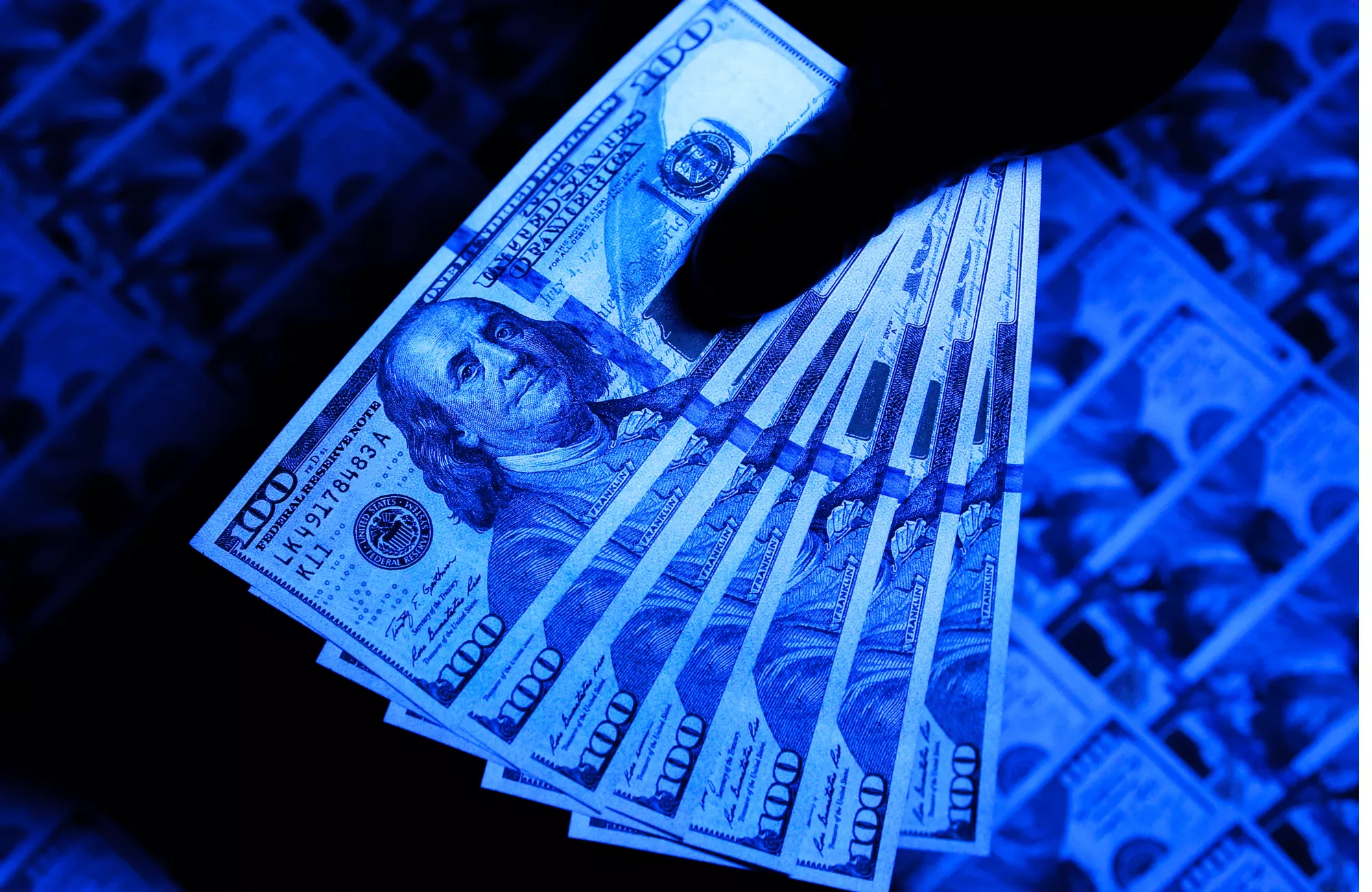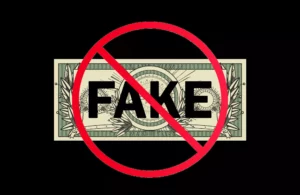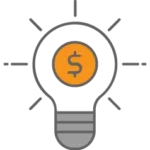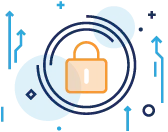
TABLE OF CONTENTS
If your business accepts cash, counterfeit money can be a major issue. Accepting fake notes can damage your cash flow and result in significant losses for your business, especially if the counterfeiting involves bills of large denominations.
The United States Government often releases new bills to make counterfeiting more challenging. For example, in 2013, the most recent version of the $100 bill was released, which includes security features such as color-shifting ink, 3-D security ribbons, and more.[1] US Currency Education Program. “$100.” Accessed August 16, 2022.
This guide looks closely at the various anti-counterfeiting steps you can take to spot fake bills. We’ll also look at some security features on specific US bill denominations and tools you can use to identify counterfeit currency. Let’s get started!
How to Spot Counterfeit Money
Are you wondering how to know if money is fake? Let’s take a look at the various elements in US currency that you should check if you want to compare counterfeit money vs real money:
Watermark
Start by assessing the watermark on your currency. If the suspected fake currency is a new $5 note, there should be three 5s printed to the left of Abraham Lincoln’s portrait. If you are checking the previous $5 design, then you should look in the same spot for a watermark portrait of Abraham Lincoln.
For new notes higher than $5 (i.e., $10, $20, $50, and $100), the watermark comes in the form of the same portrait on the bill. These watermark portraits are found on the right edge of the bill.
You should only be able to view watermarks if you hold them up to a light. The bill might be fake if a watermark is evident at first glance. Additionally, a lack of a watermark indicates a fake bill.
Serial numbers
Each bill has a unique serial number that consists of 11 numbers and letters. You should be able to find this serial number on the upper left and bottom right corner of the bill (they must match). The series year is also printed on the bill’s right side, so ensure this corresponds to the first letter on the serial number.
A serial number prefix corresponds to the bill’s year:
- A – 1996
- B – 1999
- C – 2001
- D – 2003
- E – 2004
- F – 2003A
- G – 2004A
- H – 2006
- I – 2006
- J – 2009
- K – 2006A
- L – 2009A
- M – 2013
- N – 2017
- P – 2017A
Blue and red threads
US bills have blue and red threads for security purposes. These security fibers are embedded in the currency, which means that if you notice printed fibers on a note that are not embedded in the bill, it might be fake.
Paper material

You should always inspect the paper if you want to know how to tell if a bill is fake. US paper money contains a mixture of cotton and linen, as well as a range of security fibers. We discussed the role of these fibers in the previous section.
Additionally, many fake bills are too smooth. Authentic bills contain raised textures that you can feel as your rub your fingers on the bill. There are also some tools you can use to check if the incorrect paper is present in a bill (we’ll discuss this later).
Border
Authentic bills benefit from some of the best printing processes in the world, which means they are of exceptionally high quality. If you notice blurring on borders, this indicates poor-quality printing, meaning the bill is likely counterfeit.
Security thread
Security threads exist on $5, $10, $20, $50, and $100 bills. For $20 and $100 bills, this thread is present to the left of the main portrait on the bill. However, it is to the right of the portrait for $5, $10, and $50 notes. It is only visible if held up to the light and should contain a color specific to the note:
- $5 – Blue
- $10 – Orange
- $20 – Green
- $50 – Yellow
- $100 – Pink
There are also UV light tools that you can use to confirm if the security thread is correct (we will come back to this later).
Microprinting
Microprinting is another security feature found on $5, $10, $20, $50, and $100 bills. This refined printing style is one of the most challenging printing elements for fraudsters to copy. As with borders, poor quality microprinting indicates that your bills are fake.
Color-shifting ink
For new $100, $50, $20, and $10 notes, you will find color-shifting ink, which is ink that changes color depending on the angle. This color-shifting ink should be on the denomination number in the bottom right-hand corner, and the color should shift between copper and green as you tilt the banknote back and forth.
Also, with $100 bills, an additional color-shifting ink mark is present on the bell to the right-hand side of the portrait. The bell will switch from copper to green as you move the bill, whereas the inkwell surrounding it will remain copper.
This can be a challenging element in a bill to copy, so make sure to remain aware of this feature to spot counterfeit currency.
Denomination-Specific Security Features
As you now know, there are different security features on different bill denominations. This is because it’s essential to keep the larger denominations harder to counterfeit (as it creates larger losses for consumers and merchants). Now, it’s time to take a closer look at some of the denomination-specific features found in each note.
Detection Tools to Identify Counterfeit Money
Firstly, make sure to inspect the suspected counterfeit money for the types of errors outlined in the above sections of this guide. While this is a good first step, there are also various tools you can use to detect counterfeit currency.
Let’s check out two of the tools you can use:

Counterfeit Banknote Detection Pen
One tool you can use to confirm that a bill is made from the correct type of paper is a counterfeit banknote detection pen. This pen reacts with the banknote’s surface and should produce a yellowish (or colorless) line. This occurs because US bank notes are traditionally made using paper with cotton fiber (starch-free), whereas traditional printing papers are not.
However, it must be said that many advanced counterfeiters may be able to bypass these pens by using high-grade, starch-free paper.

Counterfeit Banknote UV Light Detection Tool
Secondly, you can use a counterfeit banknote UV light detection tool to inspect parts of the bill that are not visible to the naked eye. You can use a UV light to reveal security threads on some US dollars. This part of creating fake bills can be very challenging, so being able to detect security threads is one of the best ways to double-check that a bill is real.
By combining the above two tools with physically inspecting the bill for flaws, you can greatly reduce your chances of accepting fake currency in your business.
Also, your bank will be able to tell if your currency is fake, so they will let you know if you deposit any fake bills. However, if you suspect currency is fake, report it to authorities first. You don’t want your bank assuming you are attempting to present fake bills for a deposit on purpose!
What to Do if You Find a Counterfeit Bill
Suppose you identify a suspected counterfeit bill in your business. Whether your suspicion is due to a physical inspection or an inspection using one of the previously mentioned tools, it’s essential to follow the correct procedures.
Start by contacting the police to report the counterfeit note. If the individual that provided the counterfeit note is still in your business, try to contact the police without notifying the customer. Although you cannot detain the customer, try to delay their departure from the premises.
Once authorities arrive, they will take steps to contact the US Secret Service to further the investigation. It’s essential to contact the police regardless of whether the customer remains on your premises. You must still report the counterfeit currency.
Hopefully, you have a business insurance policy that you can use to protect you from this type of payment. If so, you will likely need to provide the police report and other details regarding the counterfeit bill incident.
Final Thoughts on Real vs Fake Money
Accepting cash in your business will always expose you to counterfeit notes. In fact, many companies now only accept credit cards, which can help reduce fraud.
However, if your goal is to offer your customers as many payment options as possible, you need to be ready to spot fake bills that enter your store. Now that you know how to tell if money is real, it’s time to use the tips in this guide to begin spotting counterfeit notes!
High-Risk Businesses Wanted
Your troubles of getting approved are over!
Merchant Account
Satisfaction
Counterfeit Money FAQs
If you have any additional questions about counterfeit money, make sure to explore the popular questions and answers below:
Is counterfeiting a big problem?
Yes. While the United States Government does an excellent job of reducing the number of counterfeit bills in circulation, there’s no doubt that this issue can impact businesses. If you accept fake currencies, it can damage your revenue and result in profit reductions.
How much counterfeit money is in circulation?
It is suspected that up to $200m of counterfeit bills are in circulation within the United States economy. This is why it’s critical to know how to check if money is real!
Does counterfeit money feel like real bills?
In many cases, counterfeit money will feel smoother than authentic cash, but this isn’t always the case. Make sure to also check the multiple security features and details on the bill to determine if the note is fake.
Where is counterfeit money most likely found?
Authorities can find counterfeit money anywhere that accepts cash payments. However, the US Secret Service suggests that the Northeast (New York, Boston, New Jersey, etc.) are large markets for counterfeit money entering the country. The source of this money is often outside of the United States, with areas of South America being large production regions for fake bills.
What happens if I accidentally receive counterfeit money?
If you accidentally accept counterfeit money in your business, you must contact the police immediately. If the suspected counterfeiter is still in your business, attempt to contact the police discreetly and delay the customer until authorities arrive. Do not detain the suspect (but make a note of their description so that you can pass it on to the police).
How can counterfeit money affect my business?
As you can’t deposit counterfeit money into your business bank account, it will result in a loss for your enterprise. If you are selling large-ticket items for cash, this can be particularly devastating for your business. Don’t underestimate the cash flow problems resulting from accepting fake bills by mistake!
Remember that some insurance policies may protect you from the cost of accepting counterfeit notes (as long as you follow procedures for detecting fake notes). This may be worth exploring if you accept cash payments in your business.
What are the most common mistakes made by counterfeiters?
The most common mistakes made by counterfeiters can vary from batch to batch. Replicating color-shifting ink, watermarks, and security threads can be very challenging. However, other common mistakes also occur. For example, replicating effective borders and using the correct ink and paper can also be difficult. Sometimes printing can appear too uniform on fake bills, whereas there are many types of printing and color shades on authentic notes.






